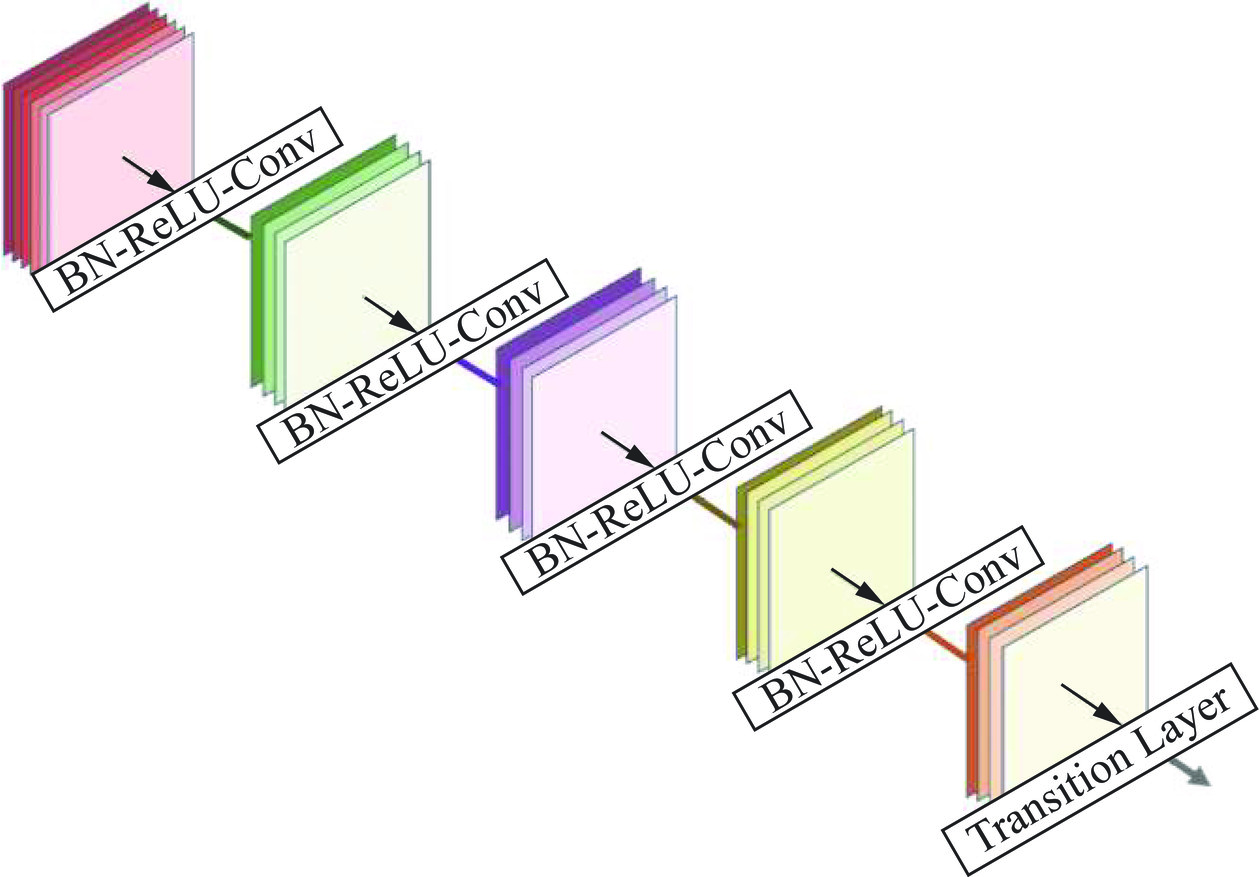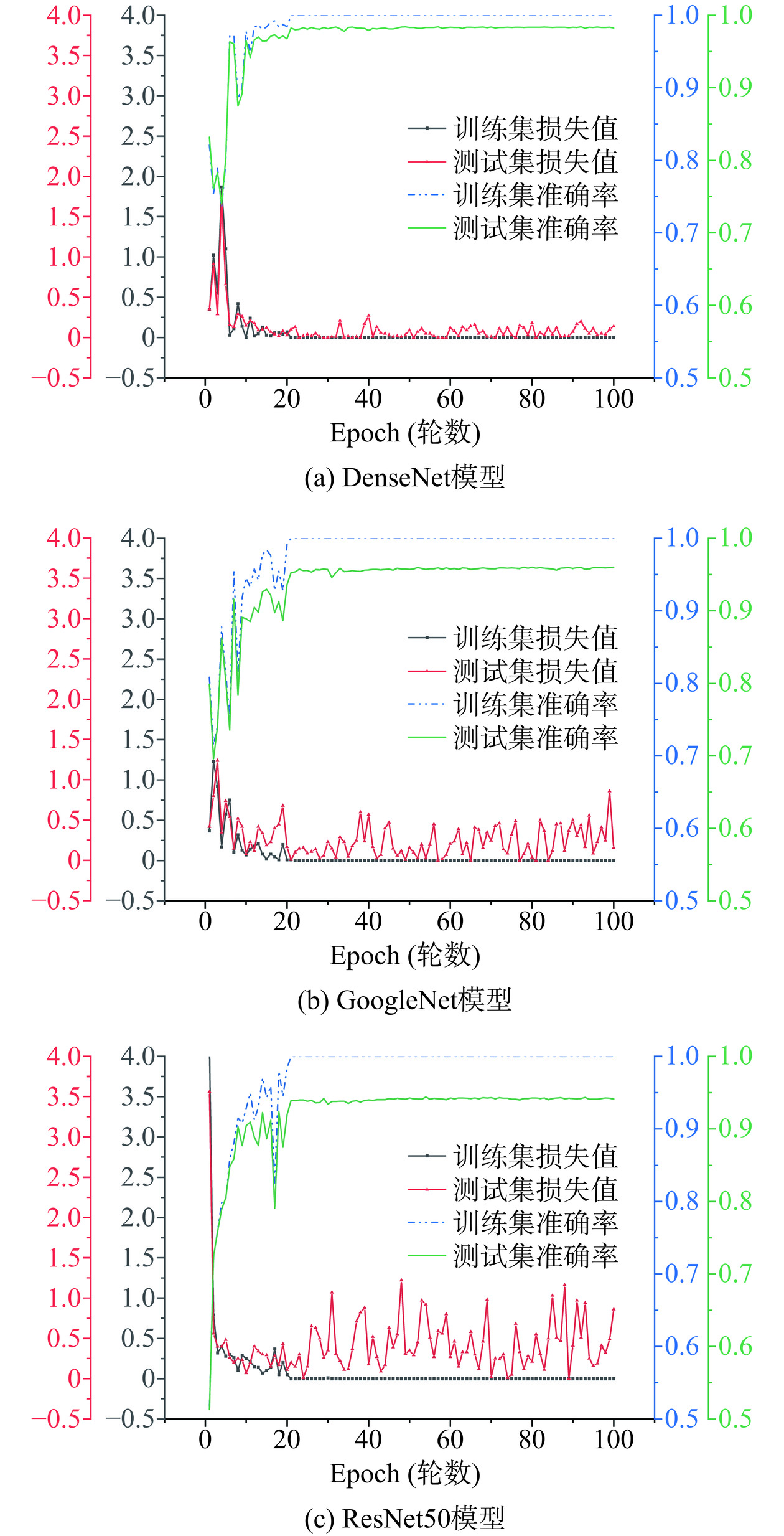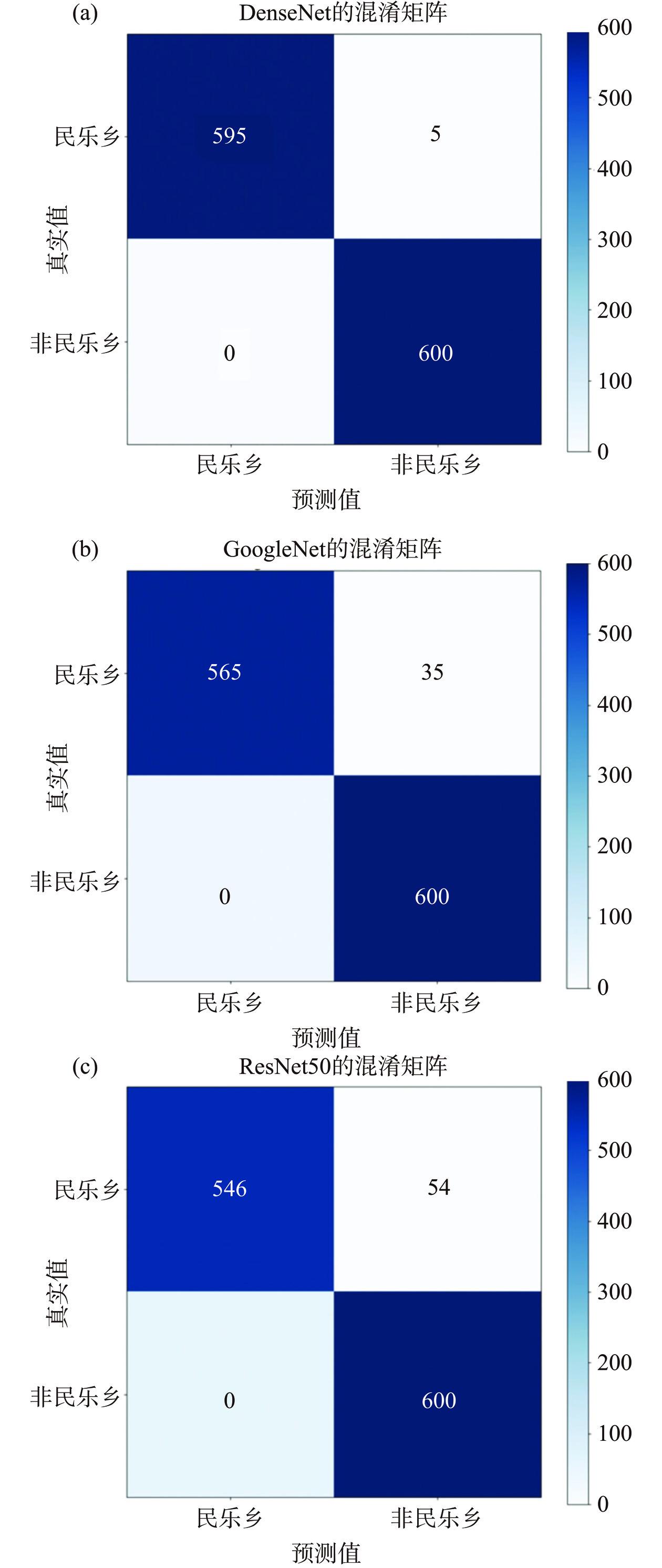Authenticity Discrimination of Fragrant Rice from Wuchang Core Production Areas Based on Polarized Light Images
-
摘要: “五常大米”(GB/T 19266-2008)享有地理标志保护,但由于其核心产区内外稻米品质差异较大及频繁的仿冒现象,进一步区分五常大米核心产区将有助于品牌发展、保护和提升。本论文以五常稻花香大米核心产区之一的民乐乡为例,选取民乐乡与五常地区非民乐乡不同产地的相同稻花香2号(五优稻4号)品种稻米,采集其偏振光图像,数据集总共包含3万张稻米颗粒图片;选择适合识别图像表型差异小的三种深度学习方法DenseNet、GoogleNet、ResNet50,进行民乐乡与非民乐乡的稻米籽粒偏振图像分类判别;随后,利用模型的混淆矩阵值,计算出每个模型的准确率、精确率、召回率和F1值。实验结果表明,DenseNet模型性能最优,平均准确率达到0.991;GoogleNet模型次之,平均准确率为0.966;ResNet50模型在训练集上表现良好,但在测试集上表现较差,且出现过拟合现象,平均准确率为0.948。本研究中五常的民乐乡与非民乐乡相同品种糙米图像肉眼观察相似度较高,但通过采集其偏振信息图片并且利用复杂的深度学习模型能够实现较好区分。所以,利用偏振成像技术结合深度学习的方法对五常核心产区稻花香米进行真实性判别具有可行性。Abstract: "Wuchang Rice" (GB/T 19266-2008) is protected by geographical indications. However, counterfeiting is common due to the significant variation in rice quality between the core producing areas and other regions. Therefore, further distinguishing core production areas within Wuchang Rice’s geographical indication product is crucial for its development, protection, and enhancement. This research focuses on Minle Township, one of the core production areas of fragrant rice in Wuchang region. This research selected fragrant rice (variety: Dahuaxiang No.2, also known as Wuyou Rice No.4) from Minle Township and compared it with the same variety from other non-Minle Township areas within Wuchang region. Polarized light images of rice grains were collected, comprising a dataset of 30000 rice grain images. Subsequently, the study employed three deep learning methods, namely DenseNet, GoogleNet, and ResNet50, which were suitable for image classification with minimal phenotypic differences, to discriminate between rice grains from Minle Township and those from non-Minle Township areas within Wuchang region. Utilizing the confusion matrix values of the models, accuracy, precision, recall, and F1 value were calculated. The results revealed that DenseNet model performed optimally, achieving a test accuracy of 0.991. GoogleNet model followed with a test accuracy of 0.966, while ResNet50 model exhibited good performance on the training set but poor performance on the test set, showing signs of overfitting, with a test accuracy of 0.948. Although visually similar, polarized images of rice grains of the same variety from Minle Township and non-Minle Township areas within Wuchang region were effectively distinguished through the collection of polarized information images and the utilization of complex deep learning models. Therefore, the combination of polarized imaging technology and deep learning methods is a feasible approach for authenticating fragrant rice from the core production areas in Wuchang region.
-
五常市地处黑龙江省南部,其特殊的地理位置造就独特的土壤环境和灌溉条件[1]。该地种植的稻花香2号(五优稻4号)外形颗粒饱满、米粒均匀,米香浓郁[2],名扬中外。“五常大米”作为享有盛誉的大米品牌,也申请了地理标志产品专用标志[3](GB/T 19266-2008),在该标准中明确了产品地理保护范围。事实上,由于五常不同地区种植差异,各产区稻米品质差异较大[4−5]。再者,常有大量周边地区的大米冒充为“五常大米”进行牟利[6]。因此,需进一步打造核心产区[7−8]标识,从核心产区角度进行产区真实性判别更能促进该品牌长足发展。目前,进行稻米产区/产地真实性判别的方法有光谱技术[9−10]、稳定同位素技术[11]、挥发性物质分析[12]、矿物元素分析技术[13]等。这些技术受前处理、仪器价格、方法可靠性[14−15]等多种因素影响,实际应用还需完善,也需要进一步开发新的简便可靠方法满足实际需求。
深度学习[16]的快速发展与应用,使得光谱成像检测技术具有分析速度快、成本低、可视化程度高的优势。与传统的机器学习方法相比,深度学习方法自动学习图像特征,识别精度高[17],泛化能力强[18],具有良好的自学习能力和强大的特征提取能力,可以有效地从肉眼难以分辨的图像数据中提取特征信息,逐渐成为谷物品种识别、分类检测的重要工具。Qiu等[19]利用高光谱成像技术研究单粒水稻种子的鉴定模型,发现卷积神经网络(CNN)模型优于K最近邻(KNN)和支持向量机(SVM)模型。Wang等[20]将多核通道注意力与卷积神经网络相结合识别高光谱信息,对稻米样本进行产地辨别,准确率为0.974。Koklu等[21]使用相机采集土耳其五种不同品种的水稻数字图像,分别对特征数据集使用人工神经网络(ANN)、深度神经网络(DNN)和CNN算法进行分类处理,模型的分类准确率是分别为0.998、0.999和1.000。Weng等[22]提出一种整合水稻样品高光谱、形态和纹理特征的深度学习网络(PCA-Net),在识别10个不同品种的水稻时,准确率达到0.986。
稻米表面积小且相似度高,其无论是品种还是产地真实性判别均存在较大难度,但为了保证稻米种植以及加工产业的良性发展需要一种快速区分稻米质量的方法。偏振成像技术[23−24]通过融合目标物的空间、光谱和偏振信息,从不同角度获取稻米表面与内部细节信息,使图像信息更加丰富、清晰、准确,增强对目标物的识别能力[25]。与其他光谱成像方法相比,偏振成像可克服光学成像技术在准确识别同色目标方面的局限性[26]。黄世钊等[27]针对豆类样品小、特征复杂、分类提取困难设计了近距离偏振成像系统并对豆类识别分类,试验结果表明,该偏振成像系统使被测物体细节更突出,清晰度提高,能有效提取特征信息,通过后续融合处理,豆类干瘪或表面破损可被清晰展现,对提高被测样品识别率有很大帮助。Fernández-Canto等[28]基于对‘Caaveiro’和Castilla面粉与本土面粉研究发现,‘Caaveiro’淀粉呈现出不同的双折射模式(与较高量的直链淀粉相关)。研究提出偏振光显微镜与数学模型结合,以简单且成本极低的方式定量混合物中“Caaveiro”面粉比例,检测水平高达5.17%。Tomita等[29]运用偏光数码显微镜对大米吸水过程进行实时可视化分析,发现图像平均亮度和投影面积的增长率与大米吸水率的变化具有高度相关性。程宇琼等[30]通过偏振光谱技术对稻种进行探测,获取数据后使用嵌入型灰色神经网络方法,实现了对稻种发芽率的预测。总之,偏振光可以为光谱检测提供新的信息,偏振图像可以根据不同目标的独特偏振特性,通过图像处理增强目标之间的差异,从而有效地识别被测目标,这些特点都有利于实现稻米产区/产地的真实性判别。
本文将研究偏振光图像结合深度学习方法对五常核心产区稻花香大米进行真实性判别。利用深度学习模型,提取五常核心产区的民乐乡与非民乐乡两大类的糙米偏振图像信息,进行智能分类识别,为推动五常大米核心产区的发展提供技术支持。
1. 材料与方法
1.1 材料与仪器
本试验分别收集了2022年当季五常地区民乐乡与非民乐乡的稻花香2号稻谷样本,各5份,每份样本20 kg,共计10份。样本具体产区信息,如表1所示。
表 1 稻谷样本产区信息Table 1. Information on the production area of rice samples来源 民乐乡 非民乐乡 样本个数 5 5 具体产区 振兴村汗泡子屯、振兴村振兴屯七组、振兴村陆家屯、
振兴村项家屯、双义村万来屯营城子乡营城子镇、杜家镇七一村、杜家镇先锋村吕家屯、
龙凤山镇乐园王家店屯、卫国乡保家村经度(E) 126°59′~127°1′ 127°10′~127°35′ 纬度(N) 45°4′~45°5′ 44°0′~45°46′ NA.JLG-2058砻谷机 台州市路桥农奥粮仪厂;PaddyCheck PC 6800 瑞典珀金埃尔默Perten;LDS-1G中文版谷物水分测量仪 青岛拓科仪器有限公司。
1.2 实验方法
1.2.1 糙米样品制备与偏振图像采集
1.2.1.1 糙米样品制备
在室温下对稻谷进行干燥,用谷物水分测量仪测定样本水分,至水分含量达到14%左右。将每份样本充分混合均匀,采用四分法分取样品,进行砻谷与过筛去杂,去除发霉籽粒、异色粒、碎米粒、垩白粒等异常籽粒,获得完整的正常糙米样本,待数据采集。
1.2.1.2 偏振图像采集
采用PaddyCheck米质分析仪进行糙米扫描,曝光时间0.4,测试速率400 Hz,磁盘速度120°/s,每组检测数量设定300粒,采集后使用仪器自带的Singulator Plus分析软件处理数据。图1为采集到的五常市民乐乡/非民乐乡糙米籽粒偏振光图像。
1.2.2 图像数据集划分
本研究中稻米图像表型差异小,需要更多的图像进行模型训练,减少过拟合的风险[31−32],所以按照9:1的比例将数据集随机划分成为训练集、测试集,具体为训练集为27000张图像,测试集为3000张图像。选择1200张图像(民乐乡和非民乐乡各600张)混合作为验证集,验证集不参与模型训练,用于验证模型的稳定性和泛化能力。在该数据集中包含的RGB图像中,每粒米粒的图像大小为225×105像素。
1.2.3 模型构建
1.2.3.1 试验平台
本研究的试验环境为64位Windows 10操作系统,内存为32 GB,搭载AMD Ryzen7 5700处理器,显卡为NVIDIA GeForce RTX 4070 Ti。模型训练在PyTorch和PyCharm 2022.3平台上完成。
1.2.3.2 网络模型选择
a. DenseNet:如图2所示采用密集连接(Dense Connection)的结构设计,每层网络之间都建立了直接的连接,可与前面所有层连接起来。在具体实现过程中,DenseNet将每一层的输出直接传递给后面的所有层[33]。这种设计可以使得后面的层直接获得前面所有层的特征图,并增加特征值的丰富性和多样性,其输入输出公式为:
Xl=Hl([X0,X1,⋯,Xl−1]) 式中,Hl代表非线性转化函数(Non-liear Transformation),包括一系列的批量归一化(Batch Normalization),修正线性单元(ReLU),池化(Pooling)及卷积(Conv)操作;X0表示网络的初始输入,即模型接收的原始图像;X1,⋯,Xl−1分别表示每个密集连接块(Dense Block)中前面所有块的输出。
DenseNet的基本结构由密集块(Dense Block)、过渡层、卷积层和全连接层组成。其中,密集块如图3所示,由具有BN、ReLU和Conv非线性映射函数的密集连接密集单元组成,采用预激活策略设计,使网络训练更容易,泛化性能更好。将密集单元输入与之前密集单元的所有输出拼接合并,生成的新特征也需要传递给后续的密集单元,这样密集块的浅层特征被反复复用并有效利用,可以在一定程度上缓解梯度消失,少量卷积核可生成大量特征。过渡层(Transition Block)是相邻密集块的结构,通过一个(1×1)的卷积加一个平均池化层进行特征压缩和降维,同时降低卷积层的计算量和参数数量。全连接层为分类预测层,接收卷积层和池化层的特征图,通过Softmax转化为每个类别的概率值,选取概率最大的类别作为预测输出。输出层使用交叉熵损失函数计算误差,反向传播更新参数优化模型。交叉熵损失函数表达式如下:
L=−1NN∑i=1c∑j=1yi,jlog(pi,j) 式中,N表示样本数量;c代表分类数;yi,j为真实标签;pi,j为模型预测的第i个样本属于第j类样本的概率。
b. GoogleNet:GoogleNet的核心是使用Inception模块作为卷积层,通过引入更多尺度卷积来获得更多尺寸局部特征[34]。其模块包含1×1、3×3和5×5个卷积核分支,多核结构可以提取和学习不同形态的稻米特征。通过引入1×1卷积核,可以提高网络深度,改善网络的非线性问题,从而降低其他卷积计算核中的维度,进而降低模型的计算量。另外,GoogleNet还通过多个Inception模块的堆叠,以提高对网络的特征表示能力[35]。在网络的最后,通过全局平均池化和全连接层将特征映射到类别概率。
c. ResNet50:ResNet50[36]采用了残差连接(Residual Connection),通过残差连接解决深层网络训练中的梯度消失和表达能力限制问题。ResNet50包含4个残差块,每个残差块包含两个卷积层,其中前三个残差块的输入和输出通道数相同,最后一个残差块的输入通道数是前一个残差块输出通道数的两倍。
1.2.3.3 超参数设置与优化
超参数是深度学习训练前设置的参数,通常需要不断对其进行调整优化以提高模型的效果和性能。在糙米图像识别网络中,学习率、学习率衰减系数和批大小是影响训练效果和性能的重要超参数。本文通过网格搜索[37]寻找所有可能的超参数组合,通过交叉验证来评估每个组合的性能,然后选择性能最好的组合,从而提高模型的准确性和泛化能力。为确保网络处于相同的可变环境中,表2是本文中3种模型使用的超参数设置。
表 2 模型超参数设置Table 2. Model hyperparameters超参数 值 超参数 值 优化器 SGD 权重衰减 0.0001 动量指数 0.9 批大小 48 学习率 0.001 最大轮数 100 1.2.3.4 模型评估标准
混淆矩阵[38]是一种用于评估分类模型性能的工具。它将真实值与预测值匹配或不匹配的情况整合到一个矩阵中,清晰地反映出预测结果的正确与错误。混淆矩阵将真实类别与分类器预测类别的组合划分为四种结果:真正例、假正例、真反例和假反例。通过计算这些结果,可以得到准确率、精确率、召回率、F1值等模型评价指标,从而评估模型的性能。混淆矩阵如表3所示。
表 3 混淆矩阵Table 3. Confusion matrix真实标签/预测结果 民乐乡 非民乐乡 民乐乡 真正例(TP) 假反例(FN) 非民乐乡 假正例(FP) 真反例(TN) 计算公式如下:
准确率:分类正确的样本数和样本总数的比值。
准确率=TP+TNTP+TN+FP+FN (1) 精确率:真正例占预测正例的比例,模型预测为正例中有多少是真正例。
精确率=TPTP+FP (2) 召回率:真正例占实际正例的比例,模型能够检测到多少实际正例。
召回率=TPTP+FN (3) F1值:综合了精确率和召回率,用于综合评价模型的分类性能。
F1=2×精确率×召回率精确率+召回率 (4) 式中:TP指分类器将民乐乡正确地预测为民乐乡的数量;TN:指分类器将非民乐乡正确地预测为非民乐乡的数量;FP指分类器将非民乐乡错误地预测为民乐乡的数量;FN指分类器将民乐乡错误地预测为非民乐乡的数量。
1.3 数据处理
本文分别使用3种深度学习模型DenseNet、GoogleNet和ResNet50对表型差异小的糙米图像进行分类识别。模型训练完成后,使用验证集数据对糙米样本进行判别。
2. 结果与分析
2.1 不同模型下的损失值和准确率变化
3种模型(DenseNet、GoogleNet和ResNet50)分别在相同训练数据集上训练100 epoch,得到的训练准确率、训练损失值与测试准确率及测试损失值,如图4所示。在图4中,DenseNet模型和GoogleNet模型的收敛速度及最高、最低值上没有太大差别,在训练22个epoch节点后准确率曲线趋于稳定,且数值均在0.940以上。从图4(c)中可以看出,ResNet50模型的测试集损失值从第25个epoch后逐渐增大,最大损失值高达1.22,曲线震荡明显,出现严重的过拟合现象,ResNet50模型在训练集上表现良好,但在测试集上表现较差[39]。在相同计算资源下,DenseNet通过密集连接充分利用网络中的信息,特征重用能力强,能更好地捕获图像中的细节和结构[40];GoogleNet使用Inception模块提高网络的非线性表达能力,特征传递不如DenseNet充分,导致准确率稍低;ResNet50包含50层深度结构,拥有大量的参数,当面对表型差异小的图像数据集时,模型可能会过分地记忆训练集中的细节和噪声,导致在测试集上表现不佳,与前人研究结果相一致[41−42]。因此,针对本文中的数据集DenseNet模型更为适合。
2.2 模型验证
为了评估模型的准确性,使用混淆矩阵是必要的。在本研究中使用独立验证数据集上的混淆矩阵和统计参数来分析3种模型的效果,并验证模型的通用性。选取民乐乡糙米图像600张和非民乐乡糙米图像600张,将其输入到已经训练好的模型中进行分类验证。验证集中的所有图像均未参与模型的训练和测试。由于相同品种不同产地糙米的形状相似,仅用肉眼很难从形态学上区分,但基于所构建的模型,识别精度达到满意水平。图5显示3种模型训练结果的混淆矩阵,结果表明,用未参与模型训练的新图像来检验模型的识别能力,仍然取得了理想的识别率。如图5a所示,DenseNet模型对民乐乡糙米的分类准确率为0.992(595/600),非民乐乡糙米的分类准确率为1.000。GoogleNet模型(图5b)对民乐乡糙米的分类准确率为0.942(565/600),非民乐糙米的分类准确率为1.000,其与DenseNet模型相比,民乐乡糙米的分类准确率降低了0.840。ResNet50模型(图5c)对民乐乡糙米的分类准确率最低,为0.910(546/600)。通过图5的对比,从分类验证结果来看,DenseNet模型对民乐乡/非民乐乡稻米的分类表现最优秀,相比之下,ResNet50模型表现最差,误分类数量最多,达到了54粒。DenseNet通过密集连接和特征重用,促进特征传播和信息流动,模型泛化能力强。以上结果表明,本文提出的深度学习模型能较好地识别稻米产地真实性,有较好的应用前景。
2.3 3种模型的准确率、精确率、召回率和F1值对比
通过提取稻米偏振图像特征,在不同模型上对每张图像进行准确率、精确率、召回率和F1值计算,如表4所示。可以观察到,DenseNet模型对民乐乡/非民乐乡两个类别都达到了最佳的识别准确率(平均准确率为0.991),表明模型在对民乐乡和非民乐乡进行分类时,能够正确地预测大部分样本的类别。DenseNet模型还达到了最高的精确率0.995,表明在预测为民乐乡类别的样本中,假阳性较少,在稻米核心产区识别模型中,需避免将非民乐乡样本错误地预测为民乐乡。召回率方面,DenseNet模型的平均召回率为0.986,表示分类器能够更好地捕捉到民乐乡图像特征,民乐乡糙米图像误分率低。而F1值方面,DenseNet模型显著高于其他模型,表明模型整体性能良好。GoogleNet在测试集上的表现与验证集上相对一致,但召回率和F1值不及DenseNet;ResNet50在验证集上的召回率和F1值最低,效果相对最差。在一项研究中,林珑等[43]采集东北和非东北产地大米高光谱图像样本,筛选多个特征波长图像并提取图像特征,结合机器学习方法建立判别模型,东北/非东北大米产地识别率为0.905。在另一项研究中,Tong等[44]使用傅里叶变换近红外(FT-NIR)漫反射光谱结合主成分分析(PCA)快速识别商业稻谷品种和地理来源,化学计量学PCA法样品校准和检测的总识别准确率分别达到0.910和0.871。Zhang等[45]采用近红外高光谱技术结合传统机器学习和深度学习方法分别建立水稻种子品种识别模型,深度学习模型准确率明显优于传统机器学习算法。初步看,目前工作中建立的方法具有较高的准确率、较低的识别时间和经济成本等优点。
表 4 3种深度学习模型对五常民乐乡/非民乐乡稻花香米偏振图像的判别结果对比Table 4. Comparison of the discrimination results of three deep learning models on polarization images of fragrant rice in Wuchang Minle and Non-Minle Townships模型 测试集 验证集 准确率 精确率 召回率 F1值 准确率 精确率 召回率 F1值 DenseNet 0.985 0.989 0.980 0.985 0.996 1.000 0.992 0.995 GoogleNet 0.960 0.960 0.960 0.960 0.971 1.000 0.942 0.970 ResNet50 0.940 0.950 0.930 0.940 0.955 1.000 0.910 0.919 3. 结论
在农业部门,快速确定稻米产地仍然是一项艰巨的任务,主要依靠感官鉴别,存在主观性强、效率低、准确率不高等问题。本论文以五常稻花香大米核心产区之一的民乐乡为例,选取了民乐乡与五常地区非民乐乡不同产地的相同稻花香2号(五优稻4号)品种稻米,采集其偏振光图像,数据集总共包含3万张稻米颗粒图片;其次,选择了更利于识别图像表型差异小的三种深度学习方法DenseNet、GoogleNet、ResNet50,进行民乐乡与非民乐乡的稻米籽粒偏振图像分类判别。
实验结果表明,在深度学习方法中,DenseNet、GoogleNet模型可以有效地判别五常地区相同品种相邻产地的稻米。其中,DenseNet模型的分类识别效果最好,分类平均准确率为0.991;GoogleNet模型次之,分类准确率为0.966;而ResNet50模型在训练过程中出现过拟合现象,相比之下,该模型网络结构对本数据集效果不佳。模型的最终目标是应用识别没有标签的样本,通过对3种深度学习模型进行验证,结果发现,深度学习模型在识别未知的稻米样本方面表现出了很高的准确性,意味着该模型在面对新样本时,具有很强的泛化能力和识别能力,这未来对于稻米核心产区的真实性判别具有重要的应用价值。
-
表 1 稻谷样本产区信息
Table 1 Information on the production area of rice samples
来源 民乐乡 非民乐乡 样本个数 5 5 具体产区 振兴村汗泡子屯、振兴村振兴屯七组、振兴村陆家屯、
振兴村项家屯、双义村万来屯营城子乡营城子镇、杜家镇七一村、杜家镇先锋村吕家屯、
龙凤山镇乐园王家店屯、卫国乡保家村经度(E) 126°59′~127°1′ 127°10′~127°35′ 纬度(N) 45°4′~45°5′ 44°0′~45°46′ 表 2 模型超参数设置
Table 2 Model hyperparameters
超参数 值 超参数 值 优化器 SGD 权重衰减 0.0001 动量指数 0.9 批大小 48 学习率 0.001 最大轮数 100 表 3 混淆矩阵
Table 3 Confusion matrix
真实标签/预测结果 民乐乡 非民乐乡 民乐乡 真正例(TP) 假反例(FN) 非民乐乡 假正例(FP) 真反例(TN) 表 4 3种深度学习模型对五常民乐乡/非民乐乡稻花香米偏振图像的判别结果对比
Table 4 Comparison of the discrimination results of three deep learning models on polarization images of fragrant rice in Wuchang Minle and Non-Minle Townships
模型 测试集 验证集 准确率 精确率 召回率 F1值 准确率 精确率 召回率 F1值 DenseNet 0.985 0.989 0.980 0.985 0.996 1.000 0.992 0.995 GoogleNet 0.960 0.960 0.960 0.960 0.971 1.000 0.942 0.970 ResNet50 0.940 0.950 0.930 0.940 0.955 1.000 0.910 0.919 -
[1] 侯学然, 王荣升. 五常市特色水稻品种的历史与现状研究——从松93-8到稻花香2号[J]. 中国种业,2021,312(3):16−18. [HOU Xueran, WANG Rongsheng. Study on the history and current situation of distinctive rice varieties in Wuchang city[J]. Chinese Seed Industry,2021,312(3):16−18.] doi: 10.3969/j.issn.1671-895X.2021.03.005 HOU Xueran, WANG Rongsheng. Study on the history and current situation of distinctive rice varieties in Wuchang city[J]. Chinese Seed Industry, 2021, 312(3): 16−18. doi: 10.3969/j.issn.1671-895X.2021.03.005
[2] 李艳君, 苏中军. 优质水稻品种五优稻4号的特征特性及栽培技术[J]. 黑龙江农业科学,2009,183(3):161. [LI Yanjun, SU Zhongjun. Characteristics and cultivation techniques of high quality rice variety Wuyoudao 4[J]. Heilongjiang Agricultural Sciences,2009,183(3):161.] doi: 10.3969/j.issn.1002-2767.2009.03.066 LI Yanjun, SU Zhongjun. Characteristics and cultivation techniques of high quality rice variety Wuyoudao 4[J]. Heilongjiang Agricultural Sciences, 2009, 183(3): 161. doi: 10.3969/j.issn.1002-2767.2009.03.066
[3] 全国知识管理标准化技术委员会地理标志分会. GB/T 19266-2008 地理标志产品 五常大米[S]. 黑龙江:中国标准出版社,2009. [Geographical Indications Branch, National Technical Committee for Standardization of Knowledge Management. GB/T 19266-2008 Geographical indication product Wuchang rice[S]. Heilongjiang:Standards Press of China,2009.] Geographical Indications Branch, National Technical Committee for Standardization of Knowledge Management. GB/T 19266-2008 Geographical indication product Wuchang rice[S]. Heilongjiang: Standards Press of China, 2009.
[4] HE X, FENG X, SUN D, et al. Rapid and nondestructive measurement of rice seed vitality of different years using near-infrared hyperspectral imaging[J]. Molecules,2019,24:2227. doi: 10.3390/molecules24122227
[5] 田青兰, 李培程, 刘利, 等. 四川不同生态区高产栽培条件下的杂交籼稻的稻米品质[J]. 作物学报,2015,41(8):1257−1268. [TIAN Qinglan, LI Peicheng, LIU Li, et al. Quality of hybrid rice under the high-yield cultivation conditions in different ecological regions of Sichuan Province, China[J]. Acta Crop Sinica,2015,41(8):1257−1268.] TIAN Qinglan, LI Peicheng, LIU Li, et al. Quality of hybrid rice under the high-yield cultivation conditions in different ecological regions of Sichuan Province, China[J]. Acta Crop Sinica, 2015, 41(8): 1257−1268.
[6] 李友华, 王虹. 黑龙江地标品牌稻米产业发展面临的问题及对策[J]. 现代审计与会计,2019,369(12):11−19. [LI Youhua, WANG Hong. Problems and countermeasures of Heilongjiang landmark brand rice industry development[J]. Modern Auditing and Accounting,2019,369(12):11−19.] LI Youhua, WANG Hong. Problems and countermeasures of Heilongjiang landmark brand rice industry development[J]. Modern Auditing and Accounting, 2019, 369(12): 11−19.
[7] 许慧. 湖南省粮食核心产区建设问题研究[D]. 长沙:湖南农业大学,2013. [XU Hui. The research about construction problem on core grain-producing areas of Hunan Province[D]. Changsha:Hunan Agricultural University,2013.] XU Hui. The research about construction problem on core grain-producing areas of Hunan Province[D]. Changsha: Hunan Agricultural University, 2013.
[8] 丁声俊. 对“粮食核心产区”建设的思考与建议——从“中原第一大粮仓”说起[J]. 中国粮食经济,2009(12):26−29. [DING Shengjun. Thoughts and suggestions on the construction of “Core grain producing area”—starting with “The largest grain granary in Central Plain”[J]. China’s Grain Economy,2009(12):26−29.] doi: 10.3969/j.issn.1007-4821.2009.12.017 DING Shengjun. Thoughts and suggestions on the construction of “Core grain producing area”—starting with “The largest grain granary in Central Plain”[J]. China’s Grain Economy, 2009(12): 26−29. doi: 10.3969/j.issn.1007-4821.2009.12.017
[9] 刘文艳, 闫忠心, 郝力壮, 等. 光谱技术在食品产地溯源中的应用研究进展[J]. 食品工业科技,2023,44(21):421−430. [LIU Wenyan, YAN Zhongxin, HAO Lizhuang, et al. Research progress on application of spectral technology in food origin traceability[J]. Science and Technology of Food Industry,2023,44(21):421−430.] LIU Wenyan, YAN Zhongxin, HAO Lizhuang, et al. Research progress on application of spectral technology in food origin traceability[J]. Science and Technology of Food Industry, 2023, 44(21): 421−430.
[10] HE Y, BAI X, XIAO Q, et al. Detection of adulteration in food based on nondestructive analysis techniques:A review[J]. Critical Reviews in Food Science and Nutrition,2021,61(14):2351−2371. doi: 10.1080/10408398.2020.1777526
[11] 赵哲, 王嘉瑜, 伍子豪, 等. 稳定同位素在农产品溯源中的研究进展[J]. 现代农业科技,2019,744(10):213−217. [ZHAO Zhe, WANG Jiayu, WU Zihao, et al. Progress on stable isotope in traceability of agricultural products[J]. Modern Agricultural Technology,2019,744(10):213−217.] doi: 10.3969/j.issn.1007-5739.2019.10.132 ZHAO Zhe, WANG Jiayu, WU Zihao, et al. Progress on stable isotope in traceability of agricultural products[J]. Modern Agricultural Technology, 2019, 744(10): 213−217. doi: 10.3969/j.issn.1007-5739.2019.10.132
[12] CAJKA T, HAJSLOVA J. Volatile compounds in food authenticity and traceability testing[J]. Chemical & Functional Properties of Food Components,2011,355–412.
[13] 白扬, 谭丽芹, 赵姗姗, 等. 大米产地溯源和真实性研究进展[J]. 安徽农业科学,2019,49(18):22−29. [BAI Yang, TAN Liqin, ZHAO Shanshan, et al. Research progress of rice origin traceability and authenticity[J]. Anhui Agricultural Sciences,2019,49(18):22−29.] BAI Yang, TAN Liqin, ZHAO Shanshan, et al. Research progress of rice origin traceability and authenticity[J]. Anhui Agricultural Sciences, 2019, 49(18): 22−29.
[14] 胡圣英, 任红波, 张军, 等. 大米产地溯源方法研究进展[J]. 中国农学通报,2020,36(14):148−155. [HU Shengying, REN Hongbo, ZHANG Jun, et al. Traceability method of rice origin:Research progress[J]. Bulletin of Chinese Agronomy,2020,36(14):148−155.] HU Shengying, REN Hongbo, ZHANG Jun, et al. Traceability method of rice origin: Research progress[J]. Bulletin of Chinese Agronomy, 2020, 36(14): 148−155.
[15] WADOOD S A, NIE J, LI C, et al. Rice authentication:An overview of different analytical techniques combined with multivariate analysis[J]. Journal of Food Composition and Analysis,2022,112:104677. doi: 10.1016/j.jfca.2022.104677
[16] CHEN J L, M ZHANG, XU B G, et al. Artificial intelligence assisted technologies for controlling the drying of fruits and vegetables using physical fields:A review[J]. Trends in Food Science & Technology,2020,105:251−60.
[17] GAO J M, LIU C Z, HAN J Y, et al. Identification method of wheat cultivars by using a convolutional neural network combined with images of multiple growth periods of wheat[J]. Symmetry,2021,13(11):2012. doi: 10.3390/sym13112012
[18] 杨红云, 黄琼, 孙爱珍, 等. 基于卷积神经网络和支持向量机的水稻种子图像分类识别[J]. 中国粮油学报,2021,36(12):144−150. [YANG Hongyun, HUANG Qiong, SUN Aizhen, et al. Rice seed image classification and recognition based on CNN_SVM[J]. Chinese Journal of Grain and Oil,2021,36(12):144−150.] doi: 10.3969/j.issn.1003-0174.2021.12.022 YANG Hongyun, HUANG Qiong, SUN Aizhen, et al. Rice seed image classification and recognition based on CNN_SVM[J]. Chinese Journal of Grain and Oil, 2021, 36(12): 144−150. doi: 10.3969/j.issn.1003-0174.2021.12.022
[19] QIU Z, CHEN J, ZHAO Y, et al. Variety identification of single rice seed using hyperspectral imaging combined with convolutional neural network[J]. Applied Sciences,2018,8(2):212. doi: 10.3390/app8020212
[20] WANG B, LU A, YU L. A multi-kernel channel attention combined with convolutional neural network to identify spectral information for tracing the origins of rice samples[J]. Analytical Methods:Advancing Methods and Applications,2023,15(2):179−186.
[21] KOKLU M, CINAR I, TASPINAR Y S. Classification of rice varieties with deep learning methods[J]. Computers and Electronics in Agriculture,2021,187(3):106285.
[22] WENG S Z, TANG P P, YUAN H C, et al. Hyperspectral imaging for accurate determination of rice variety using a deep learning network with multi-feature fusion[J]. Spectrochimica Acta. Part A, Molecular and Biomolecular Spectroscopy,2020,234:118237. doi: 10.1016/j.saa.2020.118237
[23] 孙瑞, 孙晓兵, 刘晓, 等. 基于注意力机制的偏振成像目标分类方法[J]. 光学学报,2021,41(16):103−111. [SUN Rui, SUN Xiaobing, LIU Xiao, et al. Polarimetric imaging target classification method based on attention mechanism[J]. Acta Optica Sinica,2021,41(16):103−111.] SUN Rui, SUN Xiaobing, LIU Xiao, et al. Polarimetric imaging target classification method based on attention mechanism[J]. Acta Optica Sinica, 2021, 41(16): 103−111.
[24] 周强国, 黄志明, 周炜. 偏振成像技术的研究进展及应用[J]. 红外技术,2021,43(9):817−828. [ZHOU Qiangguo, HUANG Zhiming, ZHOU Wei. Research progress and application of polarization imaging technology[J]. Infrared Technology,2021,43(9):817−828.] ZHOU Qiangguo, HUANG Zhiming, ZHOU Wei. Research progress and application of polarization imaging technology[J]. Infrared Technology, 2021, 43(9): 817−828.
[25] ZHANG L, YUAN H W, LI X M. Active polarization imaging method for latent fingerprint detection[J]. Opt Quant Electron,2018,50:353. doi: 10.1007/s11082-018-1616-8
[26] 汪靓, 杨宇, 黄敏, 等. 基于偏振成像技术的油桃机械损伤检测[J]. 激光技术,2022,46(6):841−849. [WANG Liang, YANG Yu, HUANG Min, et al. Mechanical damage detection of nectarine based on polarization imaging[J]. Laser Technology,2022,46(6):841−849.] doi: 10.7510/jgjs.issn.1001-3806.2022.06.021 WANG Liang, YANG Yu, HUANG Min, et al. Mechanical damage detection of nectarine based on polarization imaging[J]. Laser Technology, 2022, 46(6): 841−849. doi: 10.7510/jgjs.issn.1001-3806.2022.06.021
[27] 黄世钊, 陶彦辉. 基于偏振信息的豆类特征提取方法[J]. 佳木斯大学学报(自然科学版),2020,38(2):130−132. [HUANG Shizhao, TAO Yanhui. Bean feature extraction method based on polarization information[J]. Journal of Jiamusi University (Natural Science Edition),2020,38(2):130−132.] HUANG Shizhao, TAO Yanhui. Bean feature extraction method based on polarization information[J]. Journal of Jiamusi University (Natural Science Edition), 2020, 38(2): 130−132.
[28] FERNÁNDEZ-CANTO N, ROMERO-RODRÍGUEZ M Á, RAMOS-CABRER A M, et al. Polarized light microscopy guarantees the use of autochthonous wheat in the production of flour for the protected geographical indication ‘Galician Bread’[J]. Food Control,2023,147:109597. doi: 10.1016/j.foodcont.2022.109597
[29] TOMITA H, FUKUOKA M, TAKEMORI T, et al. Development of the visualization and quantification method of the rice soaking process by using the digital microscope[J]. Journal of Food Engineering,2019,243:33−38. doi: 10.1016/j.jfoodeng.2018.08.034
[30] 程宇琼, 卢伟, 罗慧, 等. 基于连续偏振光谱技术与嵌入型灰色神经网络的稻种发芽率检测方法研究[J]. 光学学报,2015,35(12):296−304. [CHENG Yuqiong, LU Wei, LUO Hui, et al. Study on prediction of rice seed germination rate by using continuous polarization spectroscopy and inlaid grey neural network[J]. Acta Optica Sinica,2015,35(12):296−304.] CHENG Yuqiong, LU Wei, LUO Hui, et al. Study on prediction of rice seed germination rate by using continuous polarization spectroscopy and inlaid grey neural network[J]. Acta Optica Sinica, 2015, 35(12): 296−304.
[31] 陈文博, 刘昌华, 刘春苔, 等. 基于GoogLeNet的稻米品种识别与碎米检测[J]. 中国粮油学报,2023,38(2):146−152. [CHEN Wenbo, LIU Changhua, LIU Chuntai, et al. Identification rice varieties and broken rice based on GoogLeNet[J]. Journal of Cereals and Oils,2023,38(2):146−152.] doi: 10.3969/j.issn.1003-0174.2023.02.022 CHEN Wenbo, LIU Changhua, LIU Chuntai, et al. Identification rice varieties and broken rice based on GoogLeNet[J]. Journal of Cereals and Oils, 2023, 38(2): 146−152. doi: 10.3969/j.issn.1003-0174.2023.02.022
[32] 樊湘鹏, 周建平, 许燕, 等. 数据集对基于深度学习的作物病害识别有效性影响[J]. 中国农机化学报,2021,42(1):192−200. [FAN Xiangpeng, ZHOU Jianping, XU Yan, et al. Influence of data set on effectiveness of crop disease recognition based on deep learning[J]. Chinese Journal of Agricultural Mechanization,2021,42(1):192−200.] FAN Xiangpeng, ZHOU Jianping, XU Yan, et al. Influence of data set on effectiveness of crop disease recognition based on deep learning[J]. Chinese Journal of Agricultural Mechanization, 2021, 42(1): 192−200.
[33] IANDOLA F, MOSKEWICZ M, KARAYEV, et al. Densenet:Implementing efficient convnet descriptor pyramids[J]. arXiv preprint arXiv,2014,1404:1869.
[34] YU C, ZHOU L, WANG X, et al. Hyperspectral detection of unsound kernels of wheat based on convolutional neural network[J]. Food Science,2017,38(24):283−287.
[35] 史婷婷, 张小波, 郭兰萍, 等. 基于深度卷积神经网络的仿野生种植金银花遥感识别方法研究[J]. 中国中药杂志,2020,45(23):5658−5662. [SHI Tingting, ZHANG Xiaobo, GUO Lanping, et al. Research on remote sensing recognition of wild planted Lonicera japonica based on deep convolutional neural network[J]. Chinese Journal of Traditional Chinese Medicine,2020,45(23):5658−5662.] SHI Tingting, ZHANG Xiaobo, GUO Lanping, et al. Research on remote sensing recognition of wild planted Lonicera japonica based on deep convolutional neural network[J]. Chinese Journal of Traditional Chinese Medicine, 2020, 45(23): 5658−5662.
[36] 梁万杰, 冯辉, 江东, 等. 高光谱图像结合深度学习的油菜菌核病早期识别[J]. 光谱学与光谱分析,2023,43(7):2220−2225. [LANG Wanjie, FENG Hui, JING Dong, et al. Early recognition of sclerotinia stem rot on oilseed rape by hyperspectral imaging combined with deep learning[J]. Spectroscopy and Spectral Analysis,2023,43(7):2220−2225.] LANG Wanjie, FENG Hui, JING Dong, et al. Early recognition of sclerotinia stem rot on oilseed rape by hyperspectral imaging combined with deep learning[J]. Spectroscopy and Spectral Analysis, 2023, 43(7): 2220−2225.
[37] 资彩飞, 曹志勇, 许佳俊, 等. 基于深度学习的水稻稻瘟病识别研究[J]. 现代农业科技,2022(1):111−113,118. [ZI Caifei, CAO Zhiyong, XU Jiajun, et al. Research on rice blast identification based on deep learning[J]. Modern Agricultural Science and Technology,2022(1):111−113,118.] doi: 10.3969/j.issn.1007-5739.2022.01.034 ZI Caifei, CAO Zhiyong, XU Jiajun, et al. Research on rice blast identification based on deep learning[J]. Modern Agricultural Science and Technology, 2022(1): 111−113,118. doi: 10.3969/j.issn.1007-5739.2022.01.034
[38] 陈伟文, 邝祝芳, 王忠伟. 基于卷积神经网络的种苗病害识别方法[J]. 中南林业科技大学学报,2022,42(7):35−43. [CHEN Weiwen, KUANG Zhufang, WANG Zhongwei. Method of seed disease recognition based on convolutional neural network[J]. Journal of Central South University of Forestry and Technology,2022,42(7):35−43.] CHEN Weiwen, KUANG Zhufang, WANG Zhongwei. Method of seed disease recognition based on convolutional neural network[J]. Journal of Central South University of Forestry and Technology, 2022, 42(7): 35−43.
[39] 陶砾, 杨朔, 杨威. 深度学习的模型搭建及过拟合问题的研究[J]. 计算机时代,2018(2):14−17,21. [TAO Li, YANG Shuo, YANG Wei. Research on model building and over-fitting of deep learning[J]. Computer Age,2018(2):14−17,21.] TAO Li, YANG Shuo, YANG Wei. Research on model building and over-fitting of deep learning[J]. Computer Age, 2018(2): 14−17,21.
[40] 杨雨昂, 闫星辰, 肖潇, 等. 基于DenseNet的西瓜叶片病虫害识别模型[J]. 电脑与信息技术,2019,31(2):19−23. [YANG Yuang, YAN Xingchen, XIAO Xiao, et al. A recognition model of watermelon leaf diseases based on DenseNet[J]. Computer and Information Technology,2019,31(2):19−23.] YANG Yuang, YAN Xingchen, XIAO Xiao, et al. A recognition model of watermelon leaf diseases based on DenseNet[J]. Computer and Information Technology, 2019, 31(2): 19−23.
[41] 李恩霖, 谢秋菊, 苏中滨, 等. 基于深度学习的玉米叶片病斑识别方法研究[J]. 智慧农业导刊,2021,1(10):1−10. [LI Enlin, XIE Qiuju, SU Zhongbin, et al. Research on corn disease identification method based on deep learning[J]. Journal of Intelligent Agriculture,2021,1(10):1−10.] LI Enlin, XIE Qiuju, SU Zhongbin, et al. Research on corn disease identification method based on deep learning[J]. Journal of Intelligent Agriculture, 2021, 1(10): 1−10.
[42] 尹显明, 棘玉, 张日清, 等. 深度学习在基于叶片的油茶品种识别中的研究[J]. 南京林业大学学报(自然科学版),2023,47(3):29−36. [YIN Xianming, JIAN Yu, ZHANG Riqing, et al. Research on recognition of Camellia oleifera leaf varieties based on deep learning[J]. Journal of Nanjing Forestry University (Natural Science Edition),2023,47(3):29−36.] doi: 10.12302/j.issn.1000-2006.202112037 YIN Xianming, JIAN Yu, ZHANG Riqing, et al. Research on recognition of Camellia oleifera leaf varieties based on deep learning[J]. Journal of Nanjing Forestry University (Natural Science Edition), 2023, 47(3): 29−36. doi: 10.12302/j.issn.1000-2006.202112037
[43] 林珑, 吴静珠, 刘翠玲, 等. 基于模型集群的东北/非东北大米产地高光谱鉴别方法研究[J]. 光谱学与光谱分析,2020,40(3):905−910. [LIN Long, WU Jingzhu, LIU Cuiling, et al. Study on hyperspectral identification method of rice origin in northeast/non-northeast China based on conjunctive model[J]. Spectroscopy and Spectral Analysis,2020,40(3):905−910.] LIN Long, WU Jingzhu, LIU Cuiling, et al. Study on hyperspectral identification method of rice origin in northeast/non-northeast China based on conjunctive model[J]. Spectroscopy and Spectral Analysis, 2020, 40(3): 905−910.
[44] TONG P J, KEVIN L J, WEI T T, et al. Rapid identification of the variety and geographical origin of Wuyou No.4 rice by fourier transform near-infrared spectroscopy coupled with chemometrics[J]. Journal of Cereal Science,2021,102:103322. doi: 10.1016/j.jcs.2021.103322
[45] ZHANG C, JIA L, JIN B, et al. Identification of rice seed varieties based on near-infrared hyperspectral imaging technology combined with deep learning[J]. ACS Omega,2022,7(6):4735−4749. doi: 10.1021/acsomega.1c04102





 下载:
下载:





 下载:
下载:



